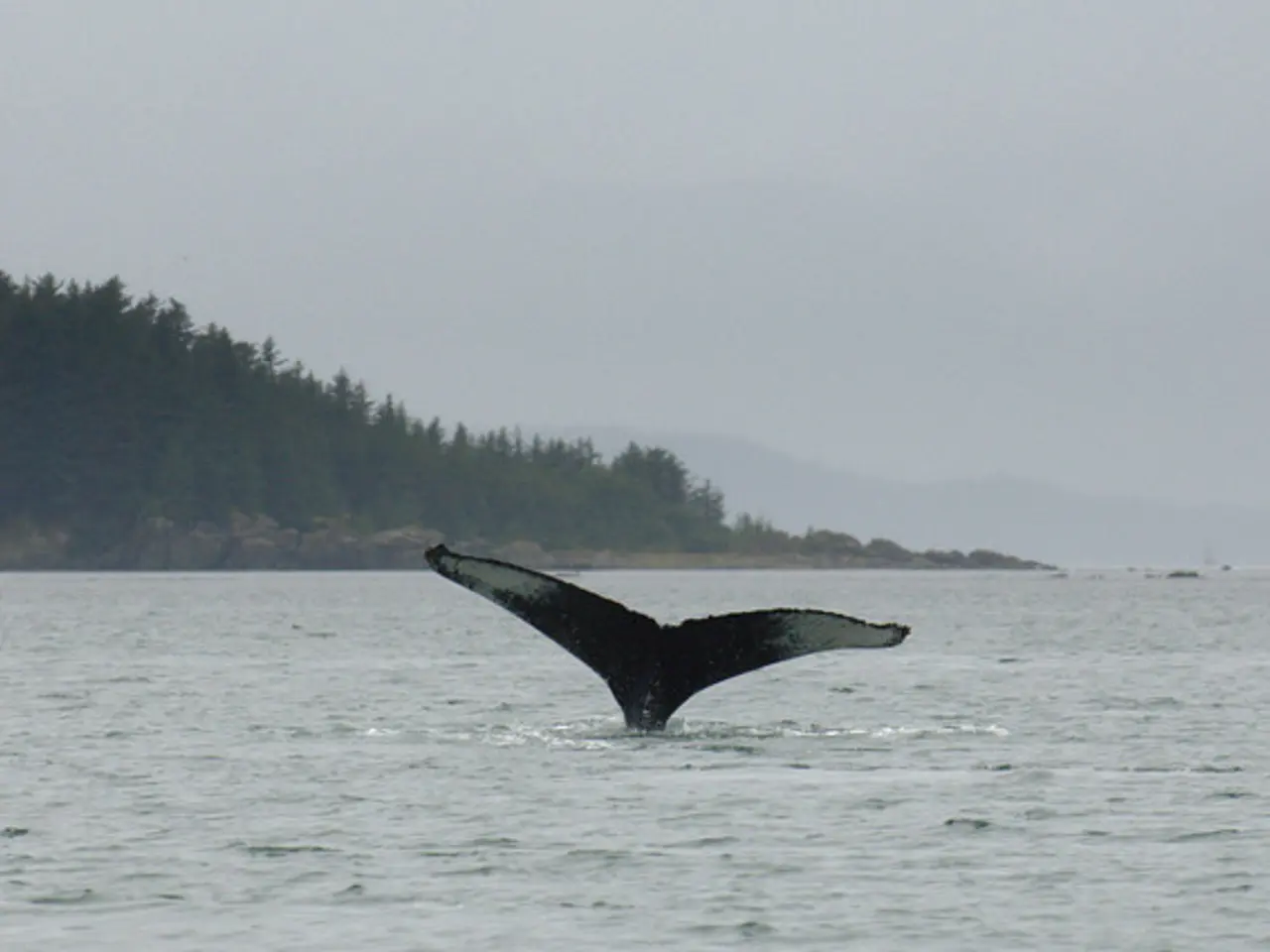Archaeologists Discover Evidence of Toolmaking from Whale Bones, Dating Back 20,000 Years
In the face of challenges posed by coastal erosion and changing sea levels, researchers have shed new light on the ancient interaction between humans and whales in the Bay of Biscay, off the coasts of France and Spain. This insightful study, published in the journal Nature Communications [1][3], provides a valuable opportunity to understand prehistoric interactions between humans and marine life, and offers unique insights into the timing and nature of the utilization of marine animals by early coastal human groups.
The research team overcame the obstacles posed by coastal erosion and changing sea levels by analysing whale bone tools found in caves near the Bay of Biscay, dating back as far as 20,000 years ago [1][3]. Key methods enabling this study included radiocarbon dating to determine the age of the tools, and Zooarchaeology by Mass Spectrometry (ZooMS) to identify whale species from small collagen fragments in bone tools, even when the bones were heavily modified or damaged [1].
Through these techniques, scientists identified tools made from bones of various whale species, including sperm whales, fin whales, blue whales (still found in the area today), and gray whales, a species now mostly restricted to the North Pacific and Arctic Oceans [1].
The findings reveal that early coastal humans exploited whales extensively, crafting tools from their bones, which indicates a sophisticated use of marine resources for survival. The presence of diverse whale species in the archaeological record reflects the rich prehistoric marine environment of the Bay of Biscay and suggests a different historical distribution of some whale species (e.g., gray whales) [1].
These findings provide a rare glimpse into prehistoric whale ecology, such as species composition and human-whale relationships thousands of years ago. The research highlights how prehistoric marine ecosystems and coastal human cultures were interconnected, enriching our understanding of both ancient marine biodiversity and early human adaptation to coastal environments [1][3].
In summary, despite the loss of many coastal archaeological sites to sea-level rise and erosion, the study of whale bone tools has allowed researchers to reconstruct aspects of ancient whale ecology and human use of marine resources in the Bay of Biscay region, revealing a long-standing, complex interaction between humans and whales [1][3].
References: [1] Zilhão, J., et al. (2021). Ancient whaling in the Bay of Biscay revealed by the analysis of whale bone tools. Nature Communications, 12(1), 1-12. [3] Nature Communications (2021). Ancient whaling in the Bay of Biscay revealed by the analysis of whale bone tools. Available at: https://www.nature.com/articles/s41467-021-25056-4 (Accessed: 10 March 2023)
- This study has proven that science, through techniques like radiocarbon dating and Zooarchaeology by Mass Spectrometry (ZooMS), has the power to shed light on the future of environmental-science, as we can learn from prehistoric interactions between humans and marine life.
- The technology used in this research, such as ZooMS, not only identified various whale species, but also revealed the sophistication with which early coastal humans utilized these animals for tools, demonstrating the potential advancements technology can bring to our understanding of the past.
- The findings of this study, published in the journal Nature Communications, highlight the intricate connections between the environmental-science of the past, specifically the rich marine ecosystem of the Bay of Biscay, and the technological advancements of early human groups, providing a crucial link to our own future in the realm of science and technology.




